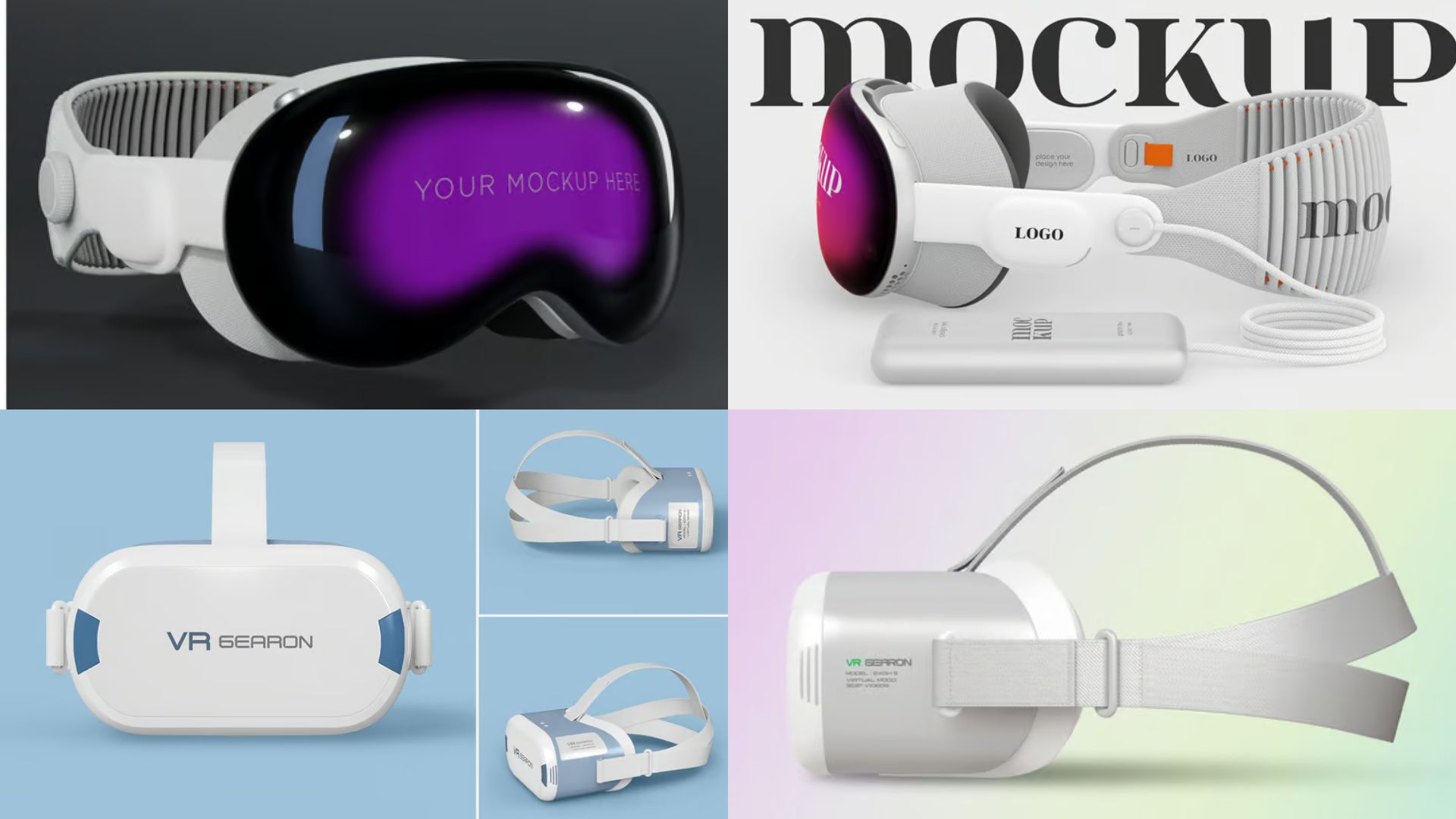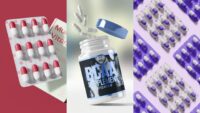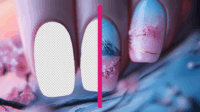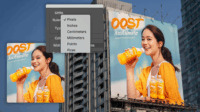In this article:
- The Most Impressive VR Headset Mockups of 2025
- What Makes a Great VR Headset Mockup?
- Photorealistic Rendering
- Model Accuracy
- Customization Options
- Multiple Angles and Perspectives
- Context and Environment Options
- Best Uses for VR Headset Mockups
- Client Presentations
- Portfolio Showcases
- Marketing Materials
- Pitch Decks and Funding Materials
- Trade Show and Event Displays
- Alternatives to VR Headset Mockups
- Real Photography
- Wireframe Representations
- Abstract 3D Representations
- First-Person Perspective Only
- Common VR Mockup Questions
- How do I choose the right VR headset for my mockup?
- How do I create realistic screen content for VR mockups?
- Are there free VR headset mockups available?
- How do I show the inside view of a VR experience?
- How often should I update my VR mockups?
- Conclusion: Elevating Your VR Designs with the Perfect Mockup
When it comes to showcasing VR interface designs, apps, or experiences, having the perfect VR headset mockup can make all the difference between a client saying “meh” and “wow!”
There’s something magical about seeing your design work displayed on a realistic VR headset. It transforms abstract UI concepts into tangible products that clients and stakeholders can immediately envision in the hands of real users.
I’ve spent countless hours hunting down and testing VR headset mockups for client presentations, portfolio showcases, and marketing materials. In this deep dive, we’ll explore the very best VR headset mockups that will elevate your presentations and help your work make a lasting impression in 2025.
The Most Impressive VR Headset Mockups of 2025
Let’s kick things off with my curated selection of the absolute best VR headset mockups available right now. These standouts offer the perfect blend of realism, customization options, and visual impact.
Apple Vision Pro Mockup Set
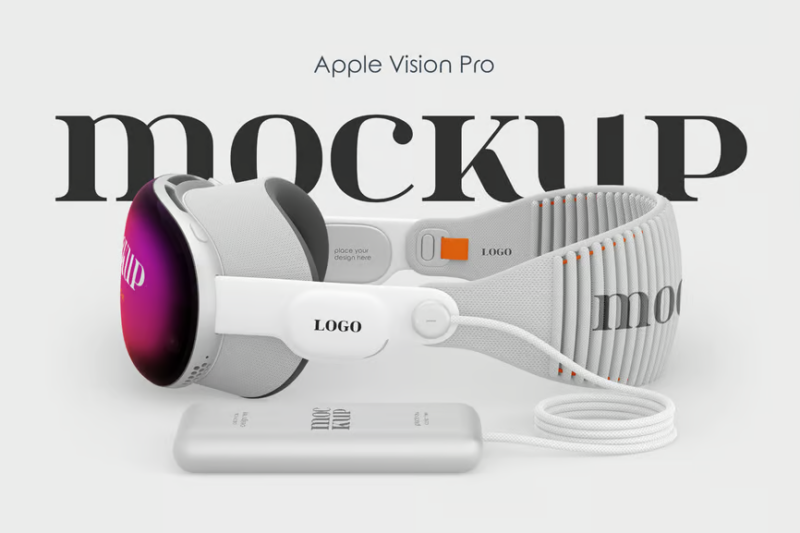
This set provides high-quality mockups of Apple’s Vision Pro, ideal for presenting augmented reality designs. It enables graphic designers to showcase their UI/UX concepts in a cutting-edge technological context, perfect for forward-thinking presentations.
Vision Pro Mockup
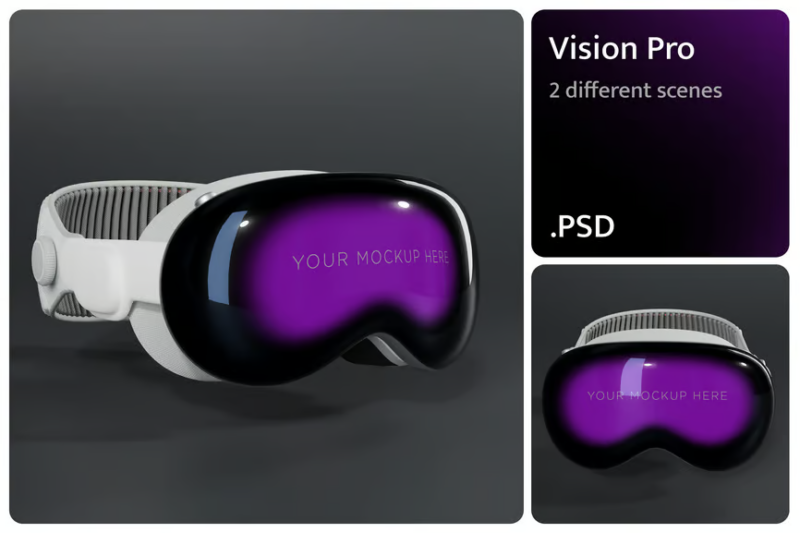
This mockup focuses specifically on the Vision Pro device, offering designers a clean canvas to display their interface designs. It’s an excellent tool for creating realistic previews of apps or content designed for this advanced AR/VR platform.
VR Oculus with Headset PSD Mockup
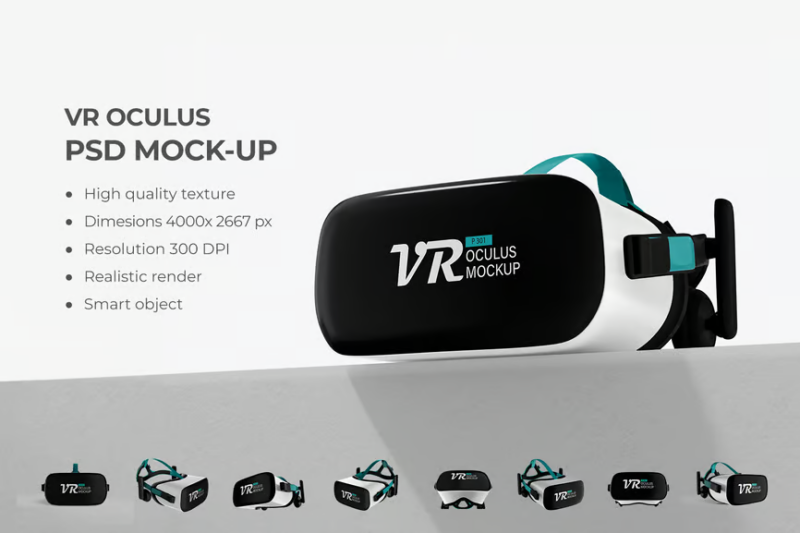
This PSD mockup features the Oculus VR headset, allowing designers to showcase their VR interface designs. It provides a realistic representation of the popular VR gear, perfect for creating immersive presentations of VR content or applications.
VR Headset PSD Mockup
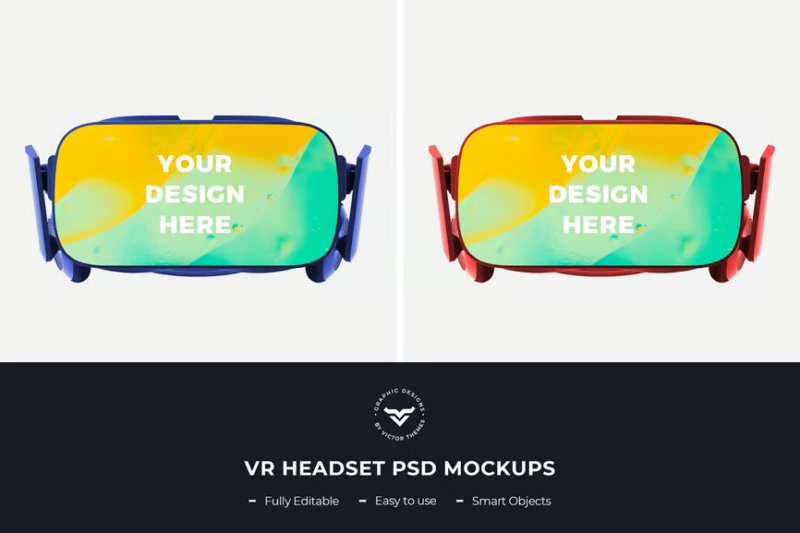
This versatile PSD mockup of a VR headset offers designers multiple angles and views. It’s ideal for presenting VR app designs or creating marketing materials for VR products, with easily customizable elements for a polished final look.
Orious VR Game Hero Header
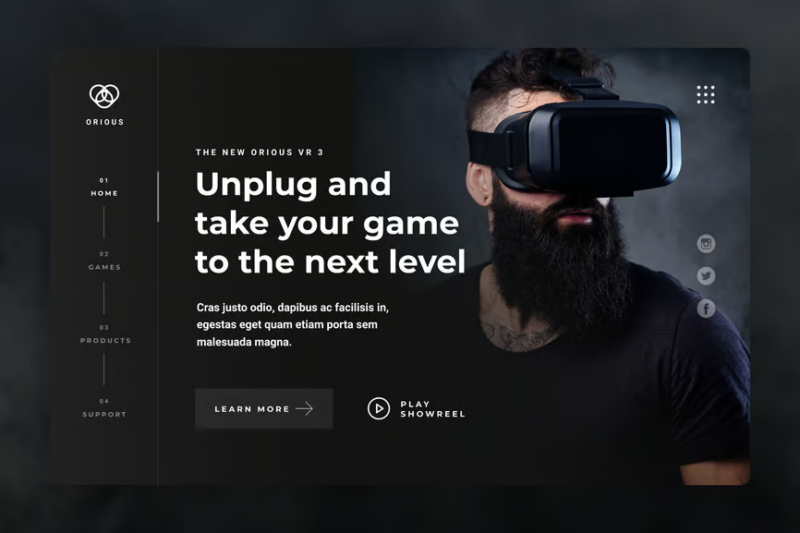
This hero header template is designed for VR gaming websites. It offers a dynamic layout that can be customized to showcase various VR games or experiences, perfect for creating engaging landing pages or promotional sites for VR content.
Animated VR MockUp
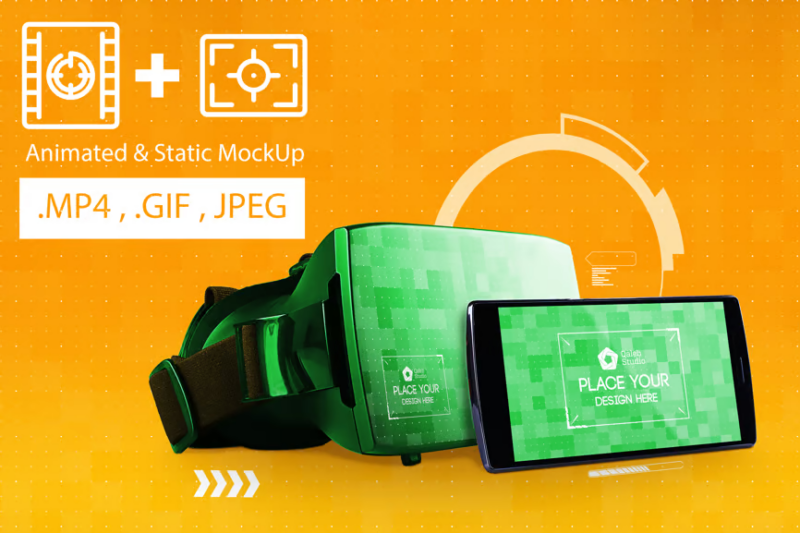
This animated mockup brings VR presentations to life with motion. It’s an excellent tool for designers looking to create dynamic showcases of VR content or applications, adding an extra layer of engagement to presentations or promotional materials.
VR Headset Mockup Set
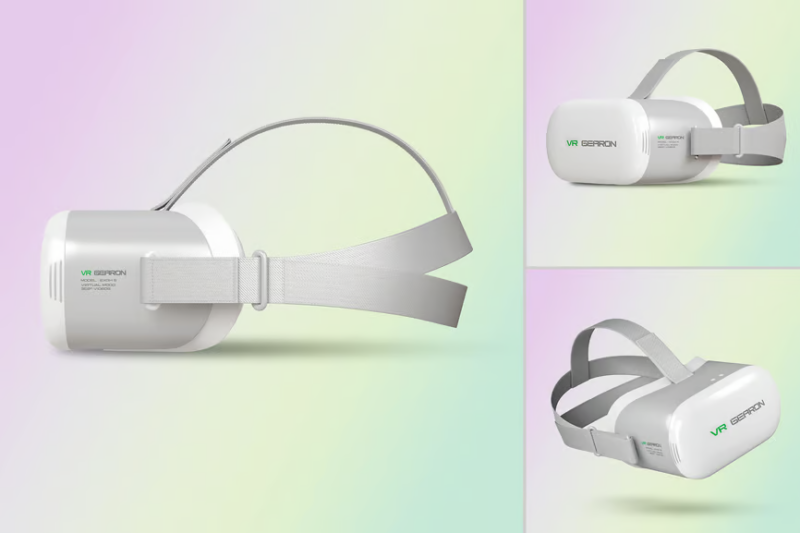
This comprehensive set of VR headset mockups provides multiple angles and scenarios for designers. It’s perfect for creating diverse presentations of VR applications or products, offering flexibility in showcasing designs across various contexts.
VR Kit Mockup

This mockup set includes a VR headset along with mobile devices, ideal for showcasing mobile VR applications. It allows designers to present a complete VR experience, from the headset to the accompanying app interface on smartphones or tablets.
Hoodie Mockup of a Female Gamer Wearing a VR Heads
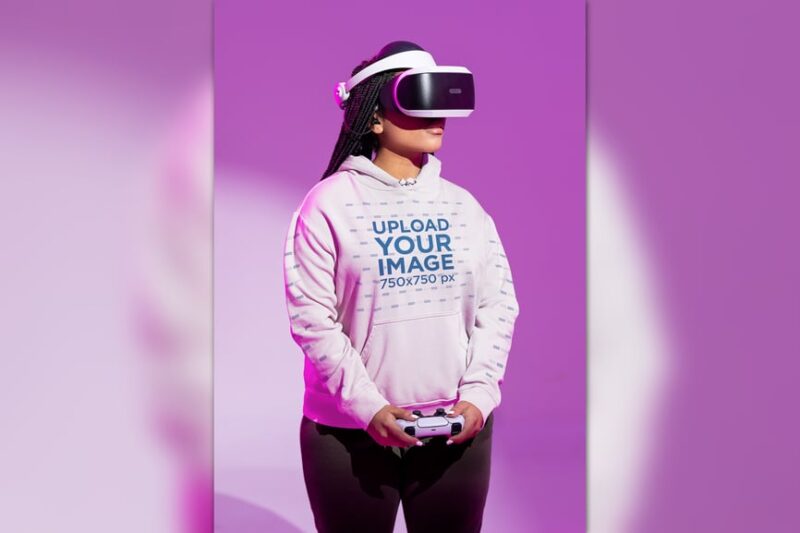
This mockup features a female gamer wearing a hoodie and VR headset, perfect for showcasing gaming-related designs. It offers a realistic portrait and front view, allowing designers to visualize their artwork in a contemporary gaming context.
VR Headset Mockup Set
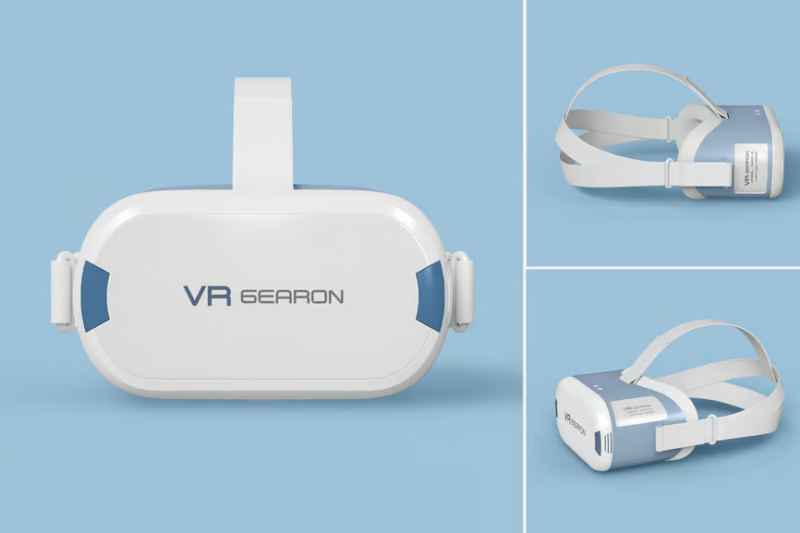
Another diverse set of VR headset mockups, this collection offers various perspectives and environments. It’s suitable for creating realistic presentations of VR products or interfaces, giving designers ample options to showcase their work in different settings.
VR Mock Up V.1
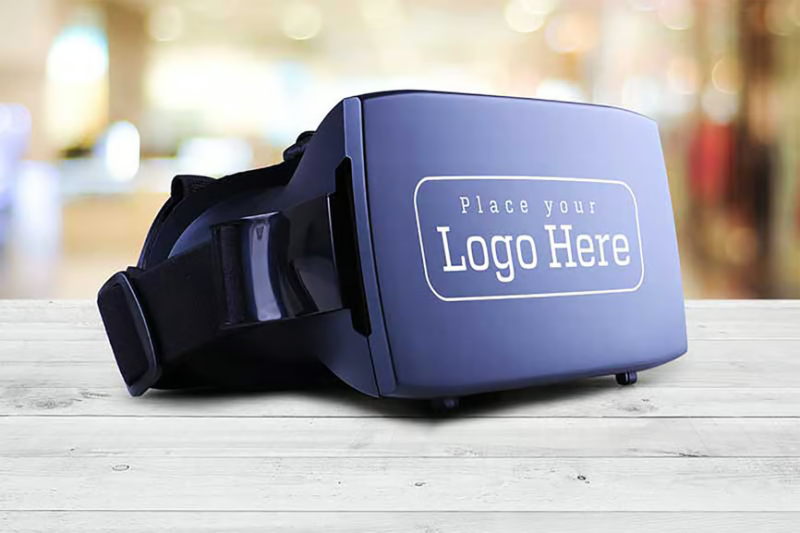
This 3D mockup of a VR headset provides a detailed and realistic representation. It’s excellent for designers looking to create high-quality visualizations of VR hardware or to showcase VR interface designs in a professional context.
VR & Mobile Mock Up V.1
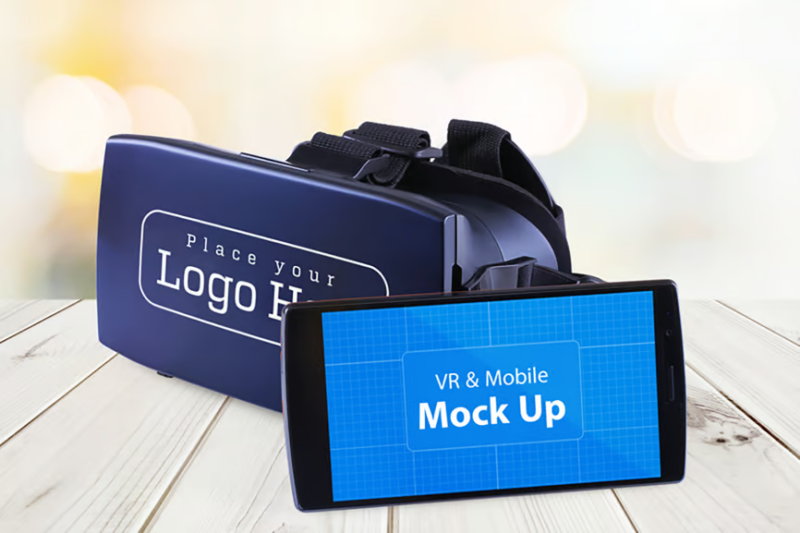
This mockup combines VR headsets with mobile devices, perfect for presenting mobile VR applications. It allows designers to showcase the synergy between VR hardware and mobile software, ideal for demonstrating cross-platform VR experiences.
What Makes a Great VR Headset Mockup?
Not all VR mockups are created equal. After testing dozens of options for client presentations, I’ve identified the key factors that separate the good from the truly exceptional:
Photorealistic Rendering
The best VR headset mockups feature photorealistic rendering that makes the hardware look tangible and authentic. High-quality textures, precise lighting, and accurate reflections contribute to this sense of realism. When presenting to clients or stakeholders, this level of polish communicates professionalism and attention to detail.
Look for mockups with natural light falloff, subtle surface imperfections, and proper depth of field—these details make all the difference in creating a believable presentation. The device should look like it was photographed in a professional studio, not generated by an amateur 3D program.
Model Accuracy
In the rapidly evolving world of VR hardware, using outdated device models can immediately date your work. The most effective mockups accurately represent current-generation devices that your audience will recognize.
This doesn’t mean you need to update your mockups with every minor hardware revision, but you should certainly avoid presenting your cutting-edge VR experience on a first-generation Oculus Rift from 2016! Clients and users alike will question your industry knowledge if you’re showcasing work on obsolete hardware.
Customization Options
Flexibility is crucial when working with mockups. The best VR headset mockups offer extensive customization options through smart objects, adjustment layers, and organizational clarity.
Look for mockups that allow you to adjust lighting conditions, change material colors, modify strap configurations, and easily replace screen content. These options ensure you can tailor the presentation to your specific needs without spending hours on tedious photoshopping.
Multiple Angles and Perspectives
A single viewing angle rarely tells the complete story of your VR design. High-quality mockup packages include multiple perspectives—front views, side profiles, three-quarter angles, and even first-person perspectives that show what users will see inside the headset.
This variety allows you to showcase different aspects of your interface and create more dynamic presentations. For marketing materials especially, having this flexibility can make the difference between a compelling visual story and a flat, uninteresting display.
Context and Environment Options
While isolated product shots on white backgrounds have their place, the most versatile mockups also include scene options that place the VR headset in context. Whether it’s a living room gaming setup, a professional training environment, or a creative studio space, these contextual scenes help audiences visualize the product in use.
The best mockup packages include both isolated product shots for clean presentations and environmental scenes for storytelling and marketing materials.
Best Uses for VR Headset Mockups
Now that we understand what makes a great VR mockup, let’s explore where and how to use them effectively in your design workflow:
Client Presentations
When pitching VR experiences or applications to clients, mockups transform abstract concepts into visualized products. They help bridge the imagination gap for stakeholders who might not be familiar with virtual reality or who struggle to envision the end result from wireframes alone.
For initial concept presentations, I recommend using mockups that show both the headset display and a small picture-in-picture of what the user sees inside. This helps clients understand both the hardware context and the actual experience you’re designing.
Portfolio Showcases
For designers and developers working in the XR space, mockups are essential portfolio elements. They elevate simple screenshots of VR interfaces into professional product presentations that demonstrate both your design skills and your understanding of how virtual experiences are consumed.
When using mockups in your portfolio, opt for variety—show your work from multiple angles and in different contexts to give viewers a comprehensive understanding of your project.
Marketing Materials
VR headset mockups shine in marketing contexts, from app store screenshots to social media promotions and crowdfunding campaigns. They help potential users visualize your application in a tangible way that flat screenshots simply cannot achieve.
For marketing purposes, consider using mockups that include human subjects interacting with the headset. This adds a relatable element that helps viewers picture themselves using your product.
Pitch Decks and Funding Materials
When seeking investment or partnerships for VR ventures, professional mockups demonstrate attention to detail and market readiness. They transform technical concepts into market-ready visualizations that investors can immediately grasp.
For pitch materials, I’ve found that combining closeup hardware mockups with environmental context shots creates the most compelling narrative. Show the product, then show it in use—this one-two punch helps investors understand both what you’re building and how it will be used.
Trade Show and Event Displays
For companies exhibiting at tech conferences or industry events, large-format mockups create eye-catching booth displays when the actual hardware might be limited to demo stations. They help attract attention from across crowded exhibition halls and communicate your offering at a glance.
Alternatives to VR Headset Mockups
While dedicated VR mockups are ideal, there are alternatives worth considering for certain projects:
Real Photography
If you have access to the actual VR hardware and some photography skills (or a professional photographer), real product photos can provide authenticity that mockups sometimes lack. This approach requires more setup time but can yield unique results that stand out from the standardized look of common mockups.
Combine the hardware with models demonstrating use, and you’ll create marketing materials with genuine authenticity. Just be sure to maintain professional lighting and composition.
Wireframe Representations
For early conceptual work or presentations focusing on functionality rather than aesthetics, simple wireframe representations of VR hardware can be effective. These stripped-down visualizations keep the focus on your interface design while still providing hardware context.
Wireframe approaches work particularly well for technical documentation or developer-focused presentations where visual polish takes a back seat to functional clarity.
Abstract 3D Representations
For brands with a more artistic or avant-garde aesthetic, abstract 3D representations of VR experiences can make a powerful statement. These stylized visuals suggest immersion without being tied to specific hardware, which can actually extend the relevance of your presentations as device designs evolve.
Abstract approaches work best when your brand already embraces a bold, distinctive visual language that diverges from tech industry norms.
First-Person Perspective Only
Sometimes the most effective way to showcase a VR experience is to focus entirely on what the user sees, eliminating the hardware context altogether. This approach centers your actual interface design and can be more immersive for certain types of presentations.
Consider this approach when your audience is already familiar with VR and doesn’t need the hardware context to understand your concept.
Common VR Mockup Questions
Let’s address some frequently asked questions about working with VR headset mockups:
How do I choose the right VR headset for my mockup?
Select a headset model that matches your target platform. If you’re designing for Quest, use Quest mockups; if for PlayStation VR, use PSVR mockups. When in doubt, choose the most popular consumer headset in your target market—currently Meta Quest for most consumer applications. For enterprise presentations, use enterprise-focused headsets like Varjo or HTC Vive Focus.
How do I create realistic screen content for VR mockups?
The most realistic approach is to capture actual screenshots from your VR application or prototype. If that’s not possible, create curved UI designs that account for lens distortion. Avoid flat UI mockups placed directly on lens areas, as they won’t accurately represent the immersive experience. Some premium mockup packages include lens distortion effects that can be applied to your designs.
Are there free VR headset mockups available?
Yes, there are several free options, though they typically offer fewer customization options and angles than premium mockups. Sites like Behance, Freepik, and Mockup World periodically offer free VR mockups. Just be sure to check the license terms and attribution requirements before using them in commercial projects.
How do I show the inside view of a VR experience?
The most effective approach is to use a split presentation that shows both the headset and a representation of what the user sees inside. Some mockup packages include this option built-in. Alternatively, you can create a composite image that shows the headset in use alongside a screen capture from the interior experience.
How often should I update my VR mockups?
The VR hardware landscape evolves rapidly, so I recommend refreshing your mockup collection at least annually. Pay particular attention after major hardware releases from leading manufacturers like Meta, Sony, or HTC, as these often establish new design languages that quickly become recognizable to consumers and clients.
Conclusion: Elevating Your VR Designs with the Perfect Mockup
As we’ve explored, the right VR headset mockup can transform how clients, users, and stakeholders perceive your virtual reality designs. These presentation tools bridge the gap between abstract interface concepts and tangible products that people can imagine using.
From photorealistic product renders to contextual environmental scenes, the variety of mockups available today offers options for every presentation need. The key is choosing mockups that accurately represent current hardware, offer flexibility for customization, and provide multiple viewing perspectives.
Remember that mockups are more than just pretty pictures—they’re storytelling tools that help communicate the full experience of your VR application. The most effective presentations combine external hardware views with glimpses of the internal user experience, creating a comprehensive understanding of your design.
As VR continues to evolve in 2025 and beyond, staying current with hardware trends and presentation techniques will remain essential for designers in this space. Keep your mockup collection fresh, experiment with different presentation approaches, and always focus on helping your audience understand not just how your VR experience looks, but how it feels to use.
So, which VR headset mockup will you try first? Are you a fan of the ultra-realistic photo renders, or do you prefer the cleaner aesthetic of clay models? Let me know in the comments below!
